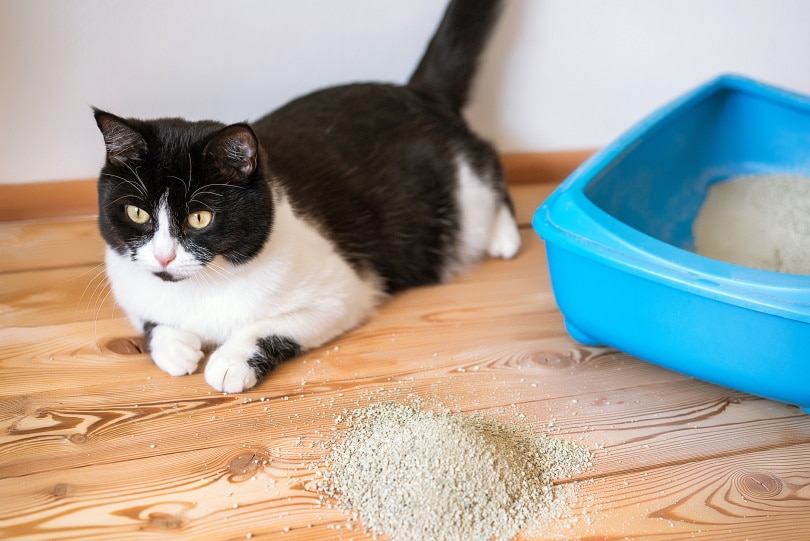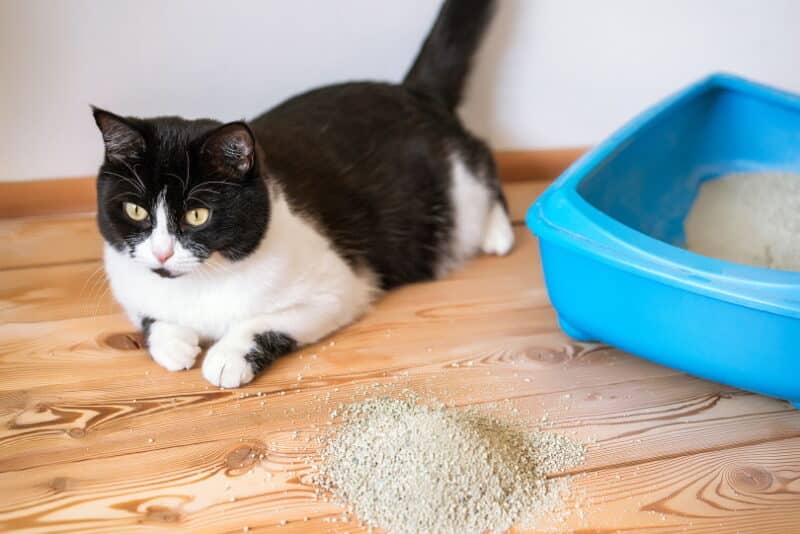If you’re forever finding pieces of cat litter scattered around your house, it’s time for a solution. Cat litter being tracked around your home is a common complaint of cat owners. So, we rounded up nine proven methods for stopping your cat from tracking litter around the house.
Why Is My Cat Tracking Litter?
Litter sticks to your cat’s paws and fur when they use the litter box. As they walk around the house, this litter falls off your cat’s paws. The litter can then end up anywhere that your cat has been: on the couch, in your carpet, or all over your freshly laundered bed.
How to Stop Litter Tracking
These are our favorite (and proven!) methods for stopping cat litter from being tracked all over your house. You might find that one method works for your home and your cat on its own, or you may need to use a combination of methods for the best results.
1. Don’t overfill the litter box
If your litter box is too full, it’s much easier for your cat to end up pawing litter outside the box. This can then get tracked around the house by your cat. Follow the instructions for your individual brand of cat litter, but as a general rule, the litter box only needs to be filled 2–3 inches deep.
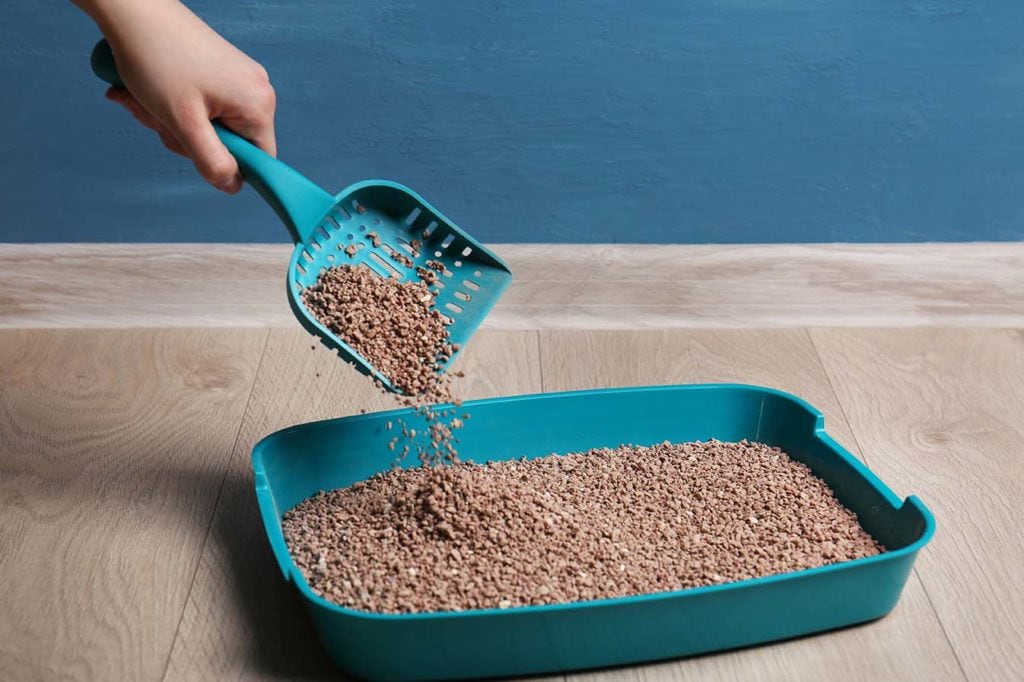
2. Choose litter with a larger granule size
Cat litter with a small granule size can often track more easily than litter of a larger size. Clumping wood litter is a good option if you’re thinking about switching to new litter to reduce tracking. Make sure to transition to the new litter gradually, though, so your cat has time to get used to it. Clay litter is one of the worst types for tracking because it can be quite dusty, which means your cat can end up with many small particles on their paws.
3. Use a high-sided or top-entry litter box
Some cats love to scrape litter around in the box, and this can result in litter flying out of the box. It’s then much easier for this to get tracked around the house. Switching to a high-sided litter box can solve this problem and keep as much of the litter as possible within the box rather than on your floors.
If that’s not enough for your cat, then a top-entry litter box might be the answer. Even if your cat ends up kicking litter high into the air, this will contain 90% of it, making cleaning up much easier.
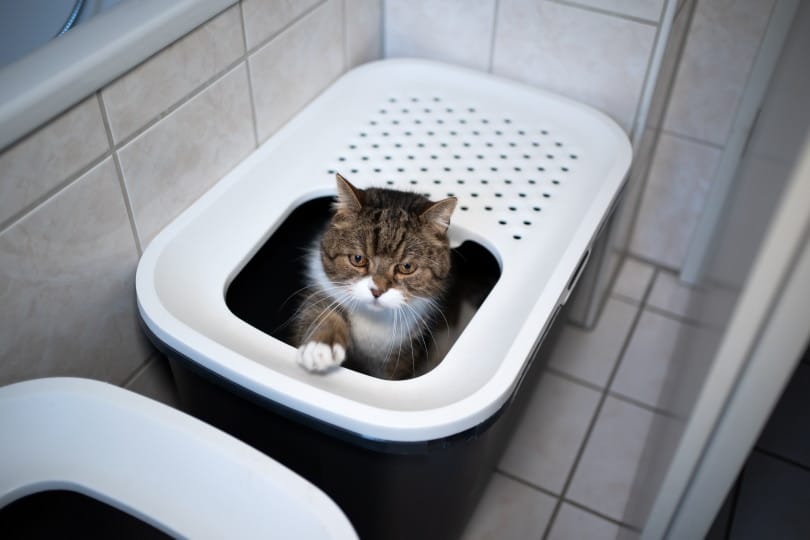
4. Use an anti-tracking mat
Placing an anti-tracking mat in front of your cat’s litter box helps reduce the amount of litter that’s tracked throughout your house. As your cat walks over the mat, the litter is caught and contained. You’ll still need to clean the mat regularly, but that’s much easier and quicker than finding litter in the whole house!
5. Clean up litter daily
Keep a cordless vacuum next to your cat’s litter box, and get into the habit of vacuuming around the litter box at least once a day. This will help keep loose litter under control and make it much less likely that it’s going to get tracked all around your house.
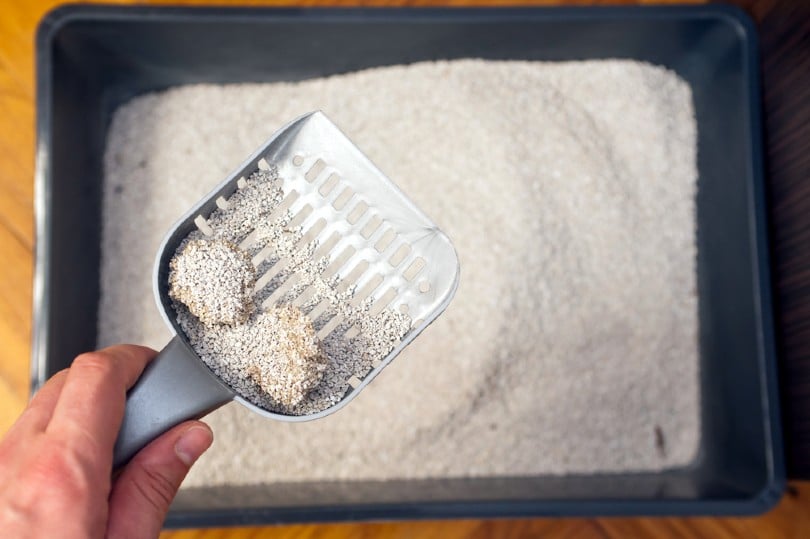
6. Use a dust-free cat litter
Litters made using clay are quite dusty. This dust, along with small particles of litter, gets stuck to your cat’s paws easily. Try switching to a dust-free litter to reduce the amount of litter that gets tracked out of the box.
7. Trim your cat’s paw fluff
Longhaired cats are much more likely to track litter because it can get stuck on the longer fur around their paw pads. You can solve this issue by trimming the fur on their paws. It may take time to get your cat used to this procedure, but once they are, you’ll find that it makes a big difference to the amount of litter that they track around the house.
You can either use a small pair of electric clippers or a pair of blunt-tip safety scissors. Alternatively, a cat groomer will be happy to complete this procedure for you.
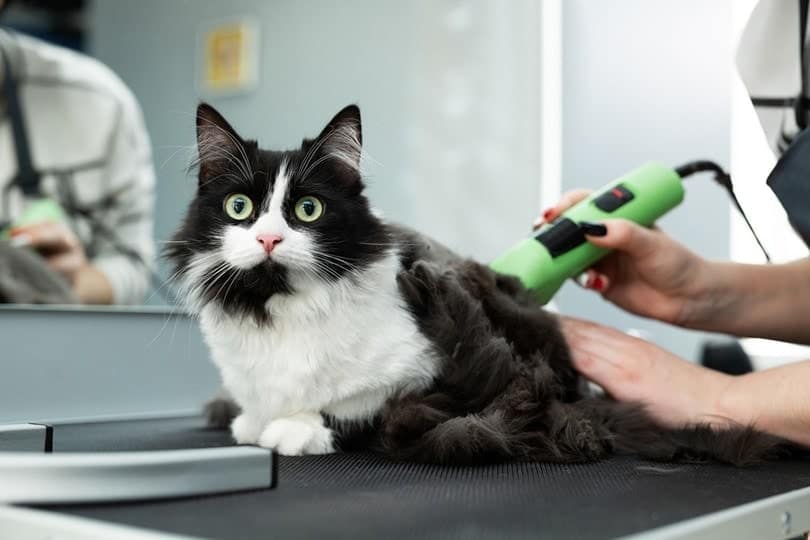
8. Use a quick-clumping cat litter
If you use a non-clumping cat litter, that could be part of the problem. Cats can step in the wet litter, which then sticks to their fur. As it dries, the litter then falls off around the house, and wherever your cat goes, you’ll find little pieces of litter! Instead, choose a quick-clumping litter, which reduces tracking and makes cleaning up your cat’s litter box an easier job.
9. Keep the litter box on a hard floor
Placing your cat’s litter box on a hard floor, made up of wood, laminate, or tiles, will greatly reduce tracking. If your litter box is placed on a carpet, the fibers around the box can get filled with small particles of litter, which are difficult to clean up.
Conclusion
Tracking litter can be a real issue for cat owners, but there are some ways to stop it. Hopefully, one of the methods above will help you stop litter tracking, well, in its tracks!
See Also:
- What Is the Worst Cat Litter? 5 Types to Stay Away From
- 10 Best Clay Cat Litters – Reviews & Top Picks
Featured Image Credit: Tanya Plotnikova_Shutterstock
Contents
- Why Is My Cat Tracking Litter?
- How to Stop Litter Tracking
- 1. Don’t overfill the litter box
- 2. Choose litter with a larger granule size
- 3. Use a high-sided or top-entry litter box
- 4. Use an anti-tracking mat
- 5. Clean up litter daily
- 6. Use a dust-free cat litter
- 7. Trim your cat’s paw fluff
- 8. Use a quick-clumping cat litter
- 9. Keep the litter box on a hard floor
- Conclusion

